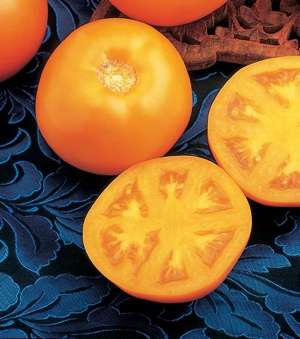 Tomatoes come in many more colours than red and one of them — the tangerine tomato — has proved to be a much better source of important nutrients than its red cousins. Tangerine tomatoes are richer in the cis form of the chemical lycopene, while red tomatoes contain the trans form of the chemical. Researchers fed human volunteers tomato sauce for breakfast. Those who ate tangerine tomatoes absorbed almost three times more lycopene than those fed red tomatoes, even though those red varieties were known to be especially high in lycopene.
Tomatoes come in many more colours than red and one of them — the tangerine tomato — has proved to be a much better source of important nutrients than its red cousins. Tangerine tomatoes are richer in the cis form of the chemical lycopene, while red tomatoes contain the trans form of the chemical. Researchers fed human volunteers tomato sauce for breakfast. Those who ate tangerine tomatoes absorbed almost three times more lycopene than those fed red tomatoes, even though those red varieties were known to be especially high in lycopene.
Lycopene is rapidly finding favour as an antioxidant that can help to protect against various forms of disease. While researchers scramble to produce high-lycopene fruits and vegetables, Tangerine is an heirloom tomato that has been around for decades. I’m sure nobody grew it for its cis-lycopene; they just liked the look and taste. But that’s the thing about agricultural biodiversity; you never know what you’ll find when you go looking.
Article: Carotenoid Absorption in Humans Consuming Tomato Sauces Obtained from Tangerine or High-beta Carotene Varieties of Tomatoes
Photo from the W. Atlee Burpee & Co.